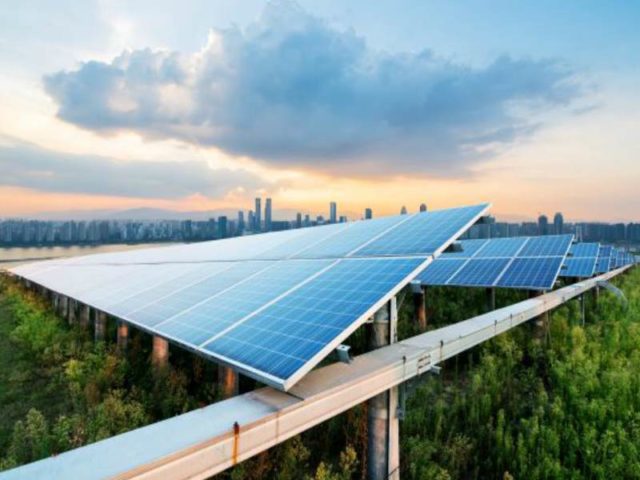
In our modern lives, electricity is the lifeblood of our homes. It powers our lights, appliances, gadgets, and more, making our daily routines convenient and efficient. However, as we enjoy the benefits of this indispensable resource, it’s important to understand how residential electrical energy consumption works and how we can make informed decisions to manage it effectively. In this blog post, we will delve into the intricacies of residential electrical energy consumption, exploring its components, factors that influence it, and practical strategies to optimize energy usage.
Components of Residential Electrical Energy Consumption
Residential electrical energy consumption can be broken down into several key components, each contributing to the overall usage:
- Lighting: Lighting is one of the most basic yet significant contributors to energy consumption. Traditional incandescent bulbs are less energy-efficient compared to LED or CFL bulbs. Switching to energy-efficient lighting options can significantly reduce energy consumption without compromising illumination quality.
- Appliances: Household appliances, such as refrigerators, washing machines, and dishwashers, contribute significantly to energy usage. The energy efficiency of these appliances varies widely, and choosing Energy Star-rated models can lead to substantial energy savings over time.
- Heating, Ventilation, and Air Conditioning (HVAC): HVAC systems play a vital role in maintaining a comfortable indoor environment. However, they can also consume a substantial amount of energy, particularly in extreme weather conditions. Regular maintenance, proper insulation, and the use of programmable thermostats can help optimize HVAC energy consumption.
- Electronics and Gadgets: The proliferation of electronic devices, from smartphones to gaming consoles, has added a new dimension to residential energy consumption. Many of these devices continue to draw power even when in standby mode. Unplugging chargers and using smart power strips can help eliminate energy waste.
Factors Influencing Residential Electrical Energy Consumption
Several factors influence the amount of electricity a household consumes:
- Occupants and Lifestyle: The number of occupants and their daily activities directly impact energy consumption. Larger families with more devices and appliances in use tend to have higher energy consumption. Additionally, individual habits, such as leaving lights on or running electronics when not needed, can contribute to wasteful energy usage.
- Seasonal Variations: Weather conditions significantly affect energy consumption, especially in regions with extreme temperatures. During colder months, heating systems work harder, while air conditioning usage spikes in warmer months. Proper insulation, weatherstripping, and adjusting thermostat settings can mitigate these seasonal fluctuations.
- Home Design and Efficiency: The architectural design and energy efficiency of a home play a crucial role. Well-insulated homes with efficient windows and doors require less energy for heating and cooling. Utilizing passive solar design principles can also harness natural energy sources to reduce overall consumption.
- Energy-Efficient Upgrades: The choice of appliances, lighting, and HVAC systems can make a substantial difference in energy consumption. Upgrading to energy-efficient models and incorporating smart technologies can lead to long-term energy savings.

Optimizing Residential Electrical Energy Consumption
To manage and optimize residential electrical energy consumption, consider these practical strategies:
- Energy Audits: Conducting a home energy audit can provide insights into energy consumption patterns and areas for improvement. Professional auditors can identify inefficiencies and recommend tailored solutions.
- Efficient Lighting: Transitioning to energy-efficient lighting, such as LEDs or CFLs, can result in significant energy savings. Motion sensors and dimmer switches can further reduce unnecessary lighting usage.
- Smart Thermostats: Installing a smart thermostat allows for precise control over heating and cooling, adjusting settings based on occupancy and time of day. Some models even learn user preferences and adapt accordingly.
- Appliance Management: Unplugging chargers and electronics when not in use, using power strips, and opting for energy-efficient appliances can curb “phantom” energy consumption.
- Renewable Energy Sources: Generating electricity from renewable sources like solar panels or wind turbines can offset energy consumption from the grid, reducing reliance on non-renewable resources.
- Behavioral Changes: Small changes in daily habits, such as turning off lights when leaving a room, using cold water for laundry, and avoiding energy-intensive activities during peak hours, can collectively lead to significant energy savings.
Conclusion
Understanding residential electrical energy consumption is essential for both environmental and economic reasons. By comprehending the components of energy consumption, the factors that influence it, and adopting practical strategies to optimize energy usage, individuals and households can reduce their carbon footprint and lower their electricity bills. Embracing energy-efficient technologies, making informed appliance choices, and adopting mindful energy consumption habits all contribute to a sustainable and responsible approach to using electricity in our homes. As we navigate an increasingly energy-conscious world, the power to make a positive impact is literally in our hands. Visit TheTechRim if you need more information or have any questions about understanding residential electrical energy consumption.
